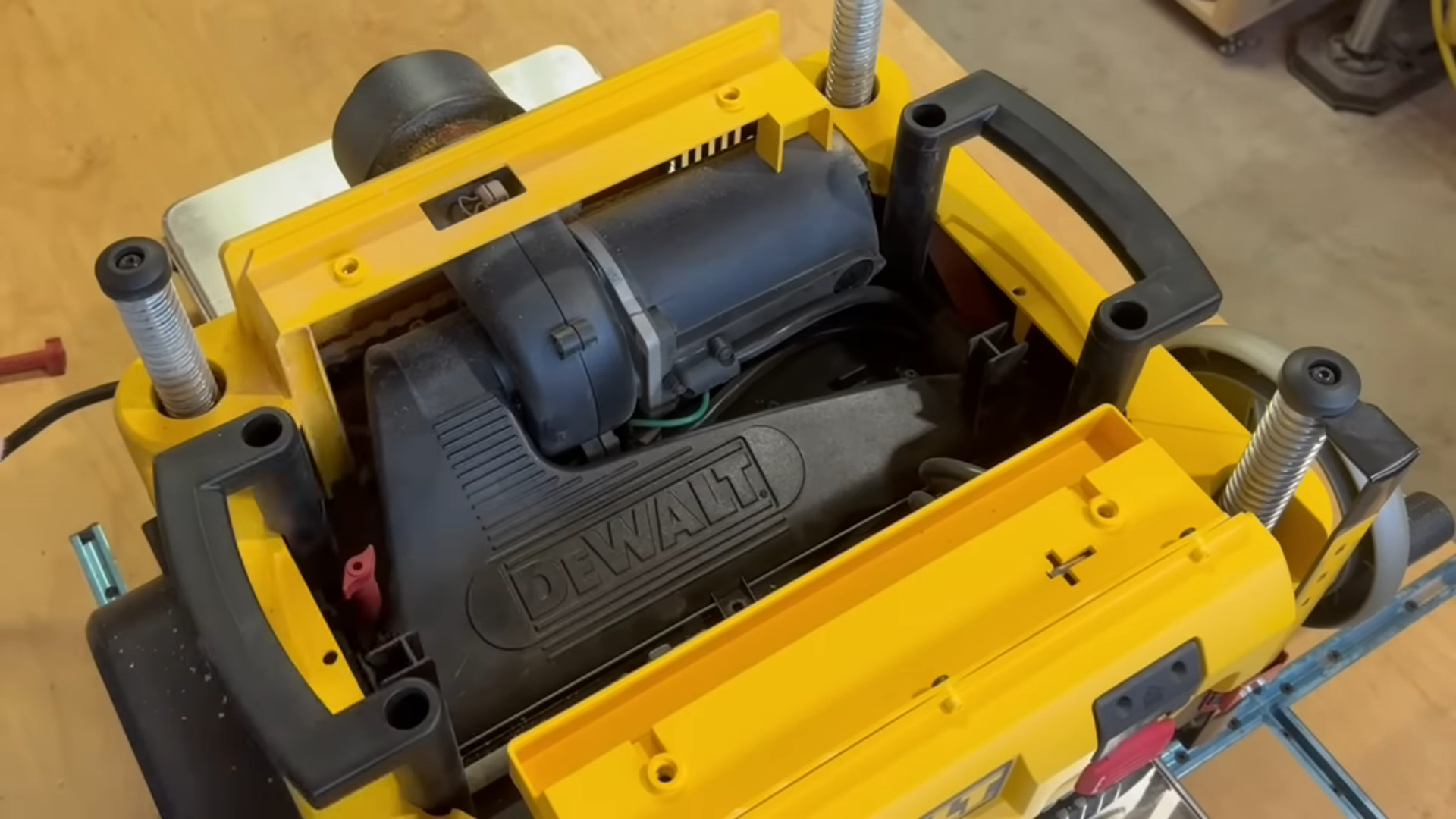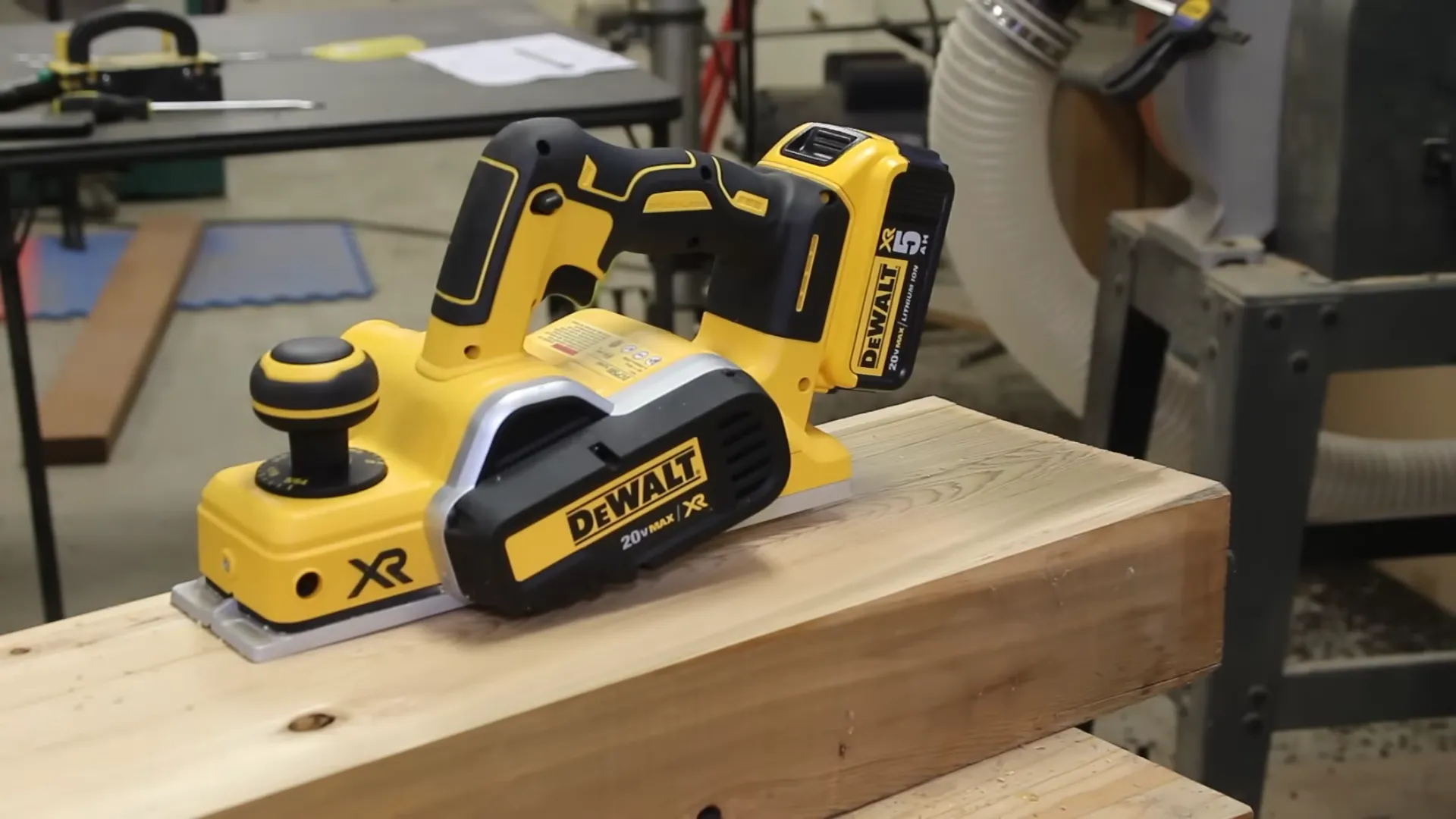How Much Does A Planer Cost? [2023]
A planer is a versatile woodworking tool used to flatten, straighten, square, and trim wood surfaces. Planers come in a range of types and sizes to suit both hobbyists and professionals. When deciding which planer to purchase, the two main factors that determine cost are the size of the planer and its intended use.
Smaller portable planers designed for occasional home use start around $200, while heavy-duty stationary planers for commercial shops can cost over $10,000.
This article will provide a comprehensive overview of the key types of planers available, the factors that influence their cost, and the typical price ranges you can expect to pay. We’ll also discuss how to choose the right planer for your needs and budget. Read on to learn all about planer costs so you can make an informed purchasing decision.
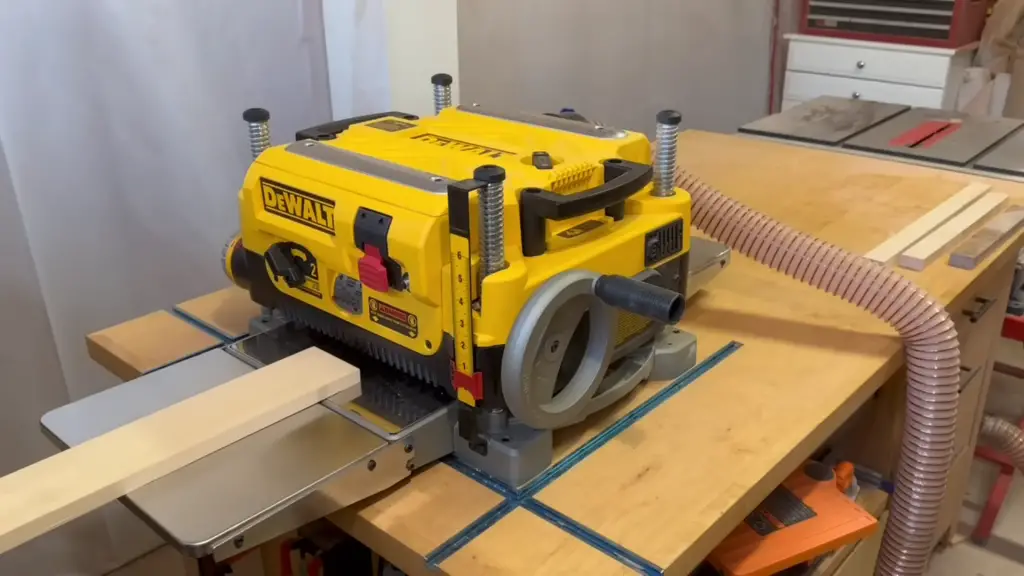
Types of Planers & Their Pricing
There are several main categories of planers, ranging from small handheld models to large industrial machines. The type of planer you choose determines its size, power, capacity, and of course, cost. The main types of planers are:
Benchtop thickness planers
Benchtop thickness planers are compact machines designed to be mounted on a workbench or table. They are used by woodworkers to create smooth, consistent thickness along the length of a board by planing down the surface. Benchtop thickness planers have a cutter head with removable knives that spin at a high speed to shave off thin layers of material as the wood is fed through on a sliding table.
Key attributes:
- Smaller size for easy portability and storage
- Limited cutting width, usually 12″ to 15”
- Less powerful motors than larger planers
- Less expensive price point around $200-$800
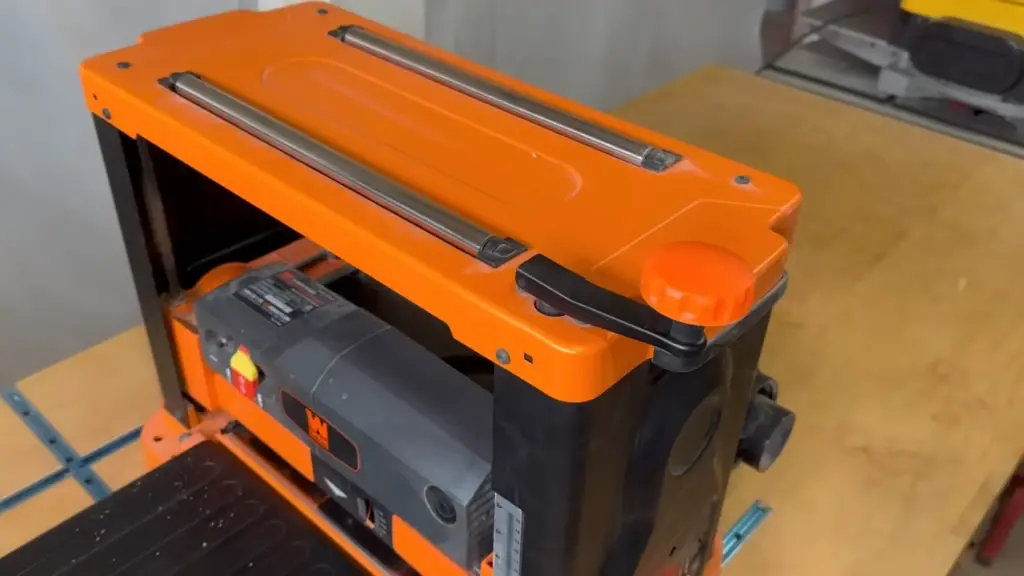
Portable handheld planers
As the name suggests, portable handheld planers are operated by hand without a stand or bench. They allow for planing wood in place and are ideal for smaller jobs. The cutter head extends from the bottom of the tool and cuts as you move the planer across the surface of the wood.
Key attributes:
- Very compact and lightweight
- Typically used just for smaller tasks like trimming edges
- Average about 3-1/4″ cutting width
- Lower power and limited depth capacity
- Inexpensive at around $100-$300
Jointer/surface planers
Jointers, also called surface planers, are stationary machines with long beds and powered roller feeds to flatten, straighten, and square longer boards. The cutter head is fixed in place while the wood moves over it on the bed. Jointers produce flat, straight edges on boards prior to cutting joinery.
Key attributes:
- Create perfectly straight and flat wood edges
- Long beds from 4’ up to 16’+ in industrial models
- Larger motors and cutting widths from 4″ to 16″+
- Heavier machines requiring permanent shop installation
- More expensive ranging from $500-$5,000+
Wide belt sanders
Wide belt sanders are heavy industrial machines used in commercial shops and milling operations. As the name implies, they utilize a wide sanding belt rather than a cutter head to remove stock and flatten boards up to 60″ wide. The belt sands the wood as it passes underneath on a powered conveyor bed.
Key attributes:
- Massive capacity for very wide boards
- Leave smoother finish than typical planing
- Require 3-phase power supply
- Huge footprint – over 15 feet long
- Commercial level pricing from $7,000-$15,000
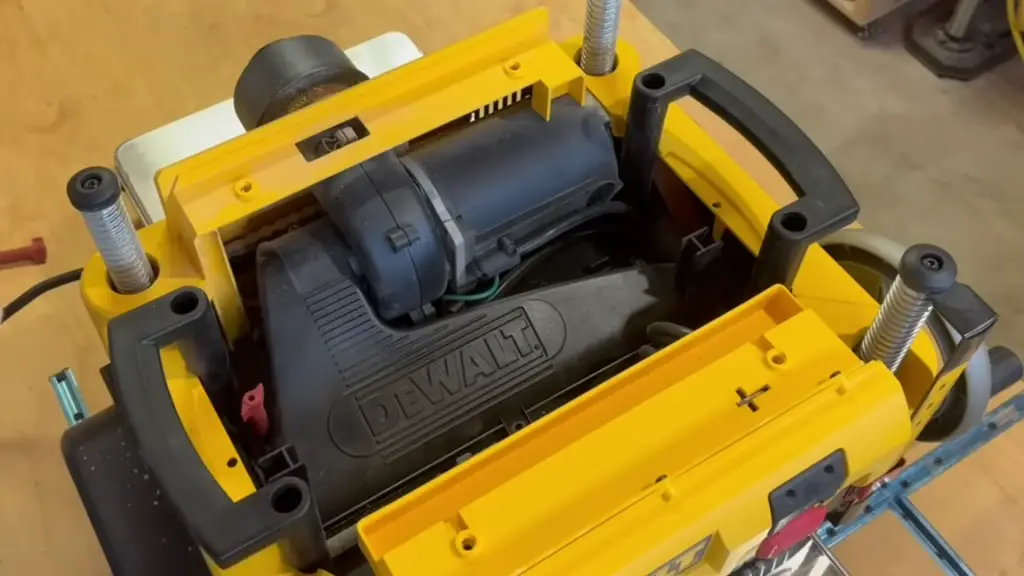
Cost Influencing Factors
Many factors contribute to the cost when buying a planer. Considering these key variables will help determine which planer is the best fit for your particular needs and budget:
Planer size
The overall size and dimensions of a planer significantly influence its price. Larger planers require more materials, engineering, and power. Maximum cutting width is a key measure of size – a 15” benchtop planer will cost much less than a 20” industrial machine. If your projects only require smaller boards, a smaller planer will save money.
Motor power
More powerful motors are needed for wider planing capacity and industrial uses. They enable faster material removal and handling of denser woods. Expect to pay more for 3 HP motors compared to 15 amp motors on portable planers. Power requirements also increase with size.
Build construction
Cast iron and steel construction provides stability and reduces machine vibration for smooth planing. But it comes at a cost – a cast iron frame and table will add expense compared to aluminum or plastic construction. Benchtop planers usually include more plastic components to save on cost and weight.
Dust collection
Integrated dust collection systems greatly reduce cleanup time but increase the planer’s price. Industrial machines often have large dust ports, while portable planers may lack dust collection entirely. Adding a dust collector adds further cost. Consider whether cleanup time or money is more valuable to you.
Special features
Additional convenience and accuracy features also raise the overall cost. For example, planers with digital displays of cutting depth, fence attachments, automatic cutter head locks, and infeed/outfeed tables will cost more than basic machines lacking those upgrades.
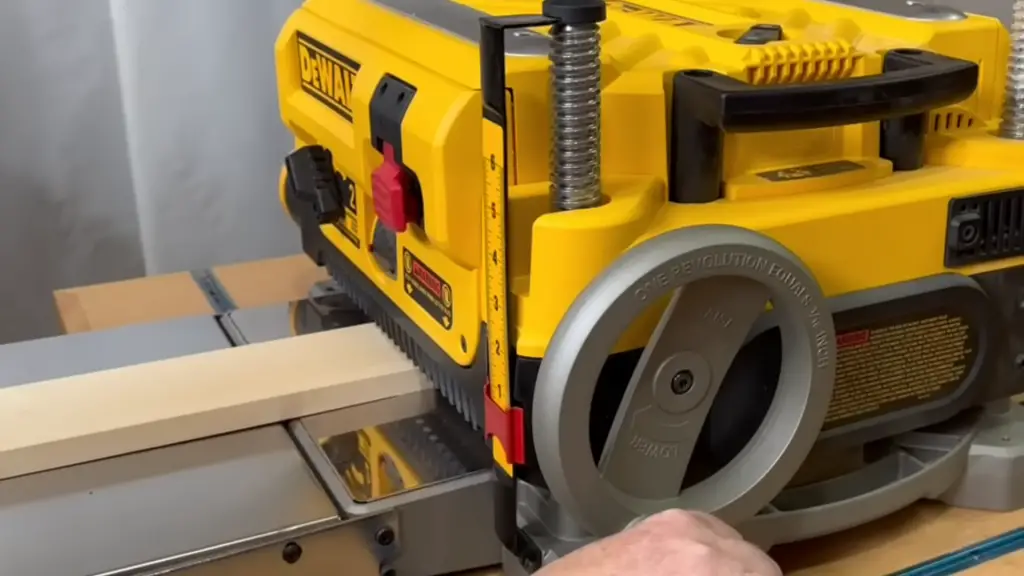
Typical Planer Costs
Now that we’ve covered the main factors affecting price, here is an overview of the typical cost ranges for common planer types and sizes:
Benchtop thickness planers
Compact benchtop thickness planers designed for home shops are the most affordable type of planer, with prices from $200 up to $800. Expect to pay:
- $200-$400: Benchtop planers under 12” width
- $300-$600: 12” to 13” benchtop planers
- $500-$800: Heavy duty 15” benchtop planers
Portable handheld planers
Portable handheld planers range from around $100 for basic models up to $300 for higher end brands with extra features. Typical pricing:
- $100-$150: Basic 3-1/4” handheld planer
- $150-$250: Mid-range 3-1/4” planer with extras like dust chute
- $250-$300: Larger 5-1/4” handheld planer model
Jointer/surface planers
Jointer planers have more variance in pricing due to the range of sizes. Expect to spend $500 to $5,000+ depending on cutting width, bed length, and features.
- $500-$1,500: 6” to 8” jointer with shorter 4’-5’ bed
- $1,500-$3,000: 8” to 12” jointer with 6’-8’ bed
- $3,000-$5,000: Heavy duty 12” to 16” jointer with 8’+ bed
- $5,000+: Extra-wide 16”+ industrial jointers
Wide belt sanders
Heavy duty wide belt sanders designed for commercial shops are the most expensive type of planer, starting around $7,000 but going up to $15,000 or more. Typical pricing:
- $7,000-$10,000: Entry level 37” wide belt sander
- $10,000-$15,000: Heavy duty 37”- 50” wide belt sander
- $15,000+: Extra wide 60”+ industrial sanders
Choosing the Right Planer

Selecting the ideal planer involves balancing your budget, workspace, typical projects, and planning needs. Keep these tips in mind when deciding the best option for your situation:
Determine your typical board width
Consider the width of boards you use for most of your projects. Narrower pieces can be managed with a smaller portable benchtop planer for hundreds less. Wider boards require a jointer planer or other full size stationary machine.
Buy only the power you need
Benchtop planers rely on standard 120V circuits, while floor model jointers need more powerful 220V circuits in a home shop. Properly sizing the motor power saves money. Power requirements also factor into electrical upgrades.
Mind your space limitations
A small hobby garage or workshop has limited space. Be realistic about available room when selecting between a compact benchtop or larger stationary planer that requires extensive footprints and potential rearranging.
Weigh time savings vs. cost
Basic portable planers require more hands-on thickness adjustment between passes. Planers with digital readouts, crank adjustments, and automatic features save time but cost more. Decide what’s more important to your workflow.
Consider future project ambitions
Even if your current skills focus on smaller projects, you may want to expand your woodworking horizons down the road. Choosing planers with some additional capacity allows for growth without needing to upgrade machines as quickly.
Recommended Models by Price Range
Here are some top recommended planer models at different budget levels:
Under $600
- DEWALT DW734
- Makita 2012NB 12” Portable Thickness Planer
- VEVOR Power Benchtop Planers
$500-$1,000
- Delta Power Tools 22-590X Bench Top Planer
- DEWALT Thickness Planer, (DW735X)
- Shop Fox W1877 13″ Portable Planer with Spiral-Style Cutterhead
$1,000-$2,000
- JET JPM-13CS, 13-Inch Planer/Molder
- Grizzly Industrial G0959-12″ Combo Planer/Jointer with Helical Cutterhead
- Shop Fox W1877 13″ Portable Planer with Spiral-Style Cutterhead & W1876 6″ Benchtop Jointer with Spiral-Style Cutterhead
Over $2,000
- Makita KP312 12-1/4″ Planer
- Grizzly Industrial G1033Z – 20″ 5 HP Planer
- Grizzly Industrial G0454Z – 20″ 5 HP Planer w/ Spiral Cutterhead
The Bottom Line
The cost of a planer varies greatly depending on the size, power, and features you require. Portable benchtop thickness planers offer an affordable option under $500 for home workshops planing narrower boards. Full size stationary jointers range from $500-$5,000+ for planing wider stock with flatter, straighter edges. And heavy duty commercial wide belt sanders run $7,000-$15,000+ for industrial level planning up to 60″ wide boards.
Carefully consider your budget, workspace, typical projects, and needs when selecting a planer. Buy only the features and power that matches your requirements rather than overspending on unnecessary capabilities. With some planning ahead of your purchase, you can find the ideal planer that fits both your workshop and your budget.

